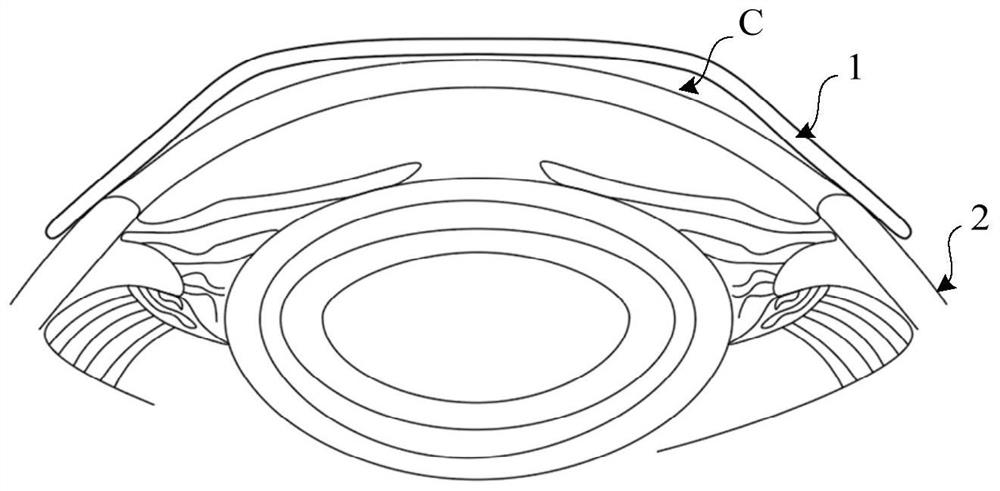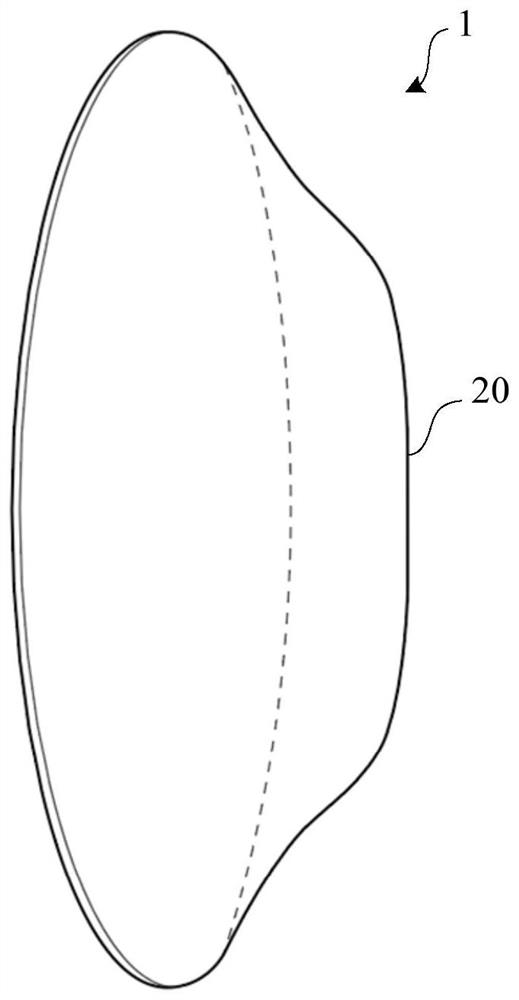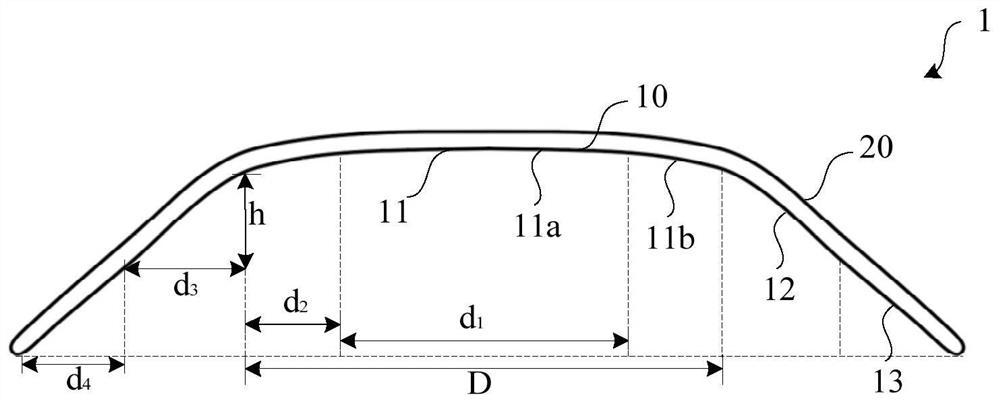Orthokeratology lenses for myopia control
A technology for orthokeratology lenses and corneas, applied in glasses/goggles, optical components, instruments, etc., can solve the problems of inability to achieve effective control of myopia development, small defocusing amount around the cornea, and difficulty in forming defocusing amount
- Summary
- Abstract
- Description
- Claims
- Application Information
AI Technical Summary
Problems solved by technology
Method used
Image
Examples
Embodiment Construction
[0028] Hereinafter, the present disclosure will be described in further detail with reference to the accompanying drawings and specific embodiments. In the drawings, the same components or components having the same function are marked with the same symbols, and repeated descriptions thereof are omitted.
[0029] The orthokeratology lens 1 for myopia control according to the present embodiment (hereinafter simply referred to as the “orthokeratology lens 1 ”) may have an inner surface 10 and an outer surface 20 , and the outer surface 20 may be opposed to the inner surface 10 . In addition, when the orthokeratology lens 1 is worn, the inner surface 10 of the orthokeratology lens 1 may face the front surface of the cornea. In this embodiment, the change in the shape of the cornea 2 may be reversible, and the shape of the cornea 2 will return to the original state over time. In some examples, the orthokeratology lens 1 according to the present embodiment may be a night-wearing t...
PUM
 Login to View More
Login to View More Abstract
Description
Claims
Application Information
 Login to View More
Login to View More - R&D
- Intellectual Property
- Life Sciences
- Materials
- Tech Scout
- Unparalleled Data Quality
- Higher Quality Content
- 60% Fewer Hallucinations
Browse by: Latest US Patents, China's latest patents, Technical Efficacy Thesaurus, Application Domain, Technology Topic, Popular Technical Reports.
© 2025 PatSnap. All rights reserved.Legal|Privacy policy|Modern Slavery Act Transparency Statement|Sitemap|About US| Contact US: help@patsnap.com



